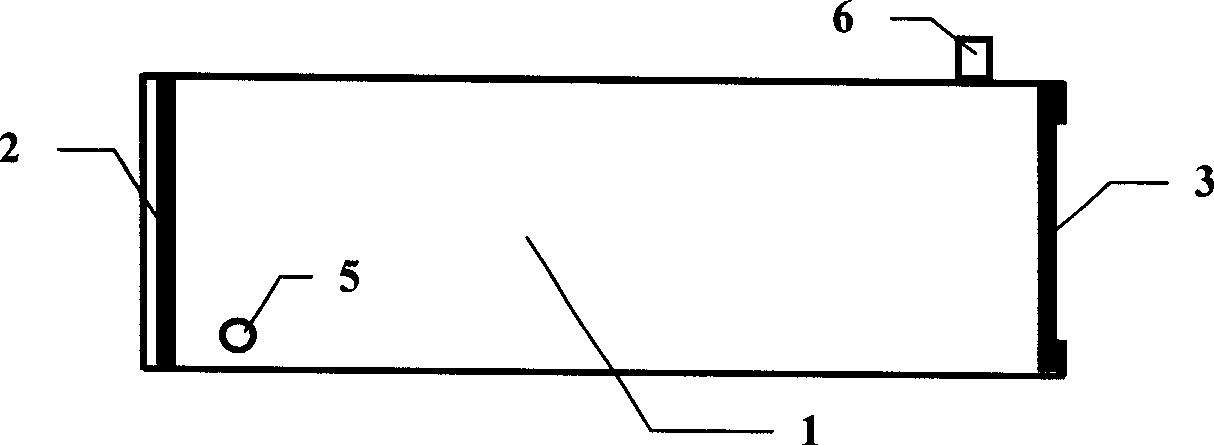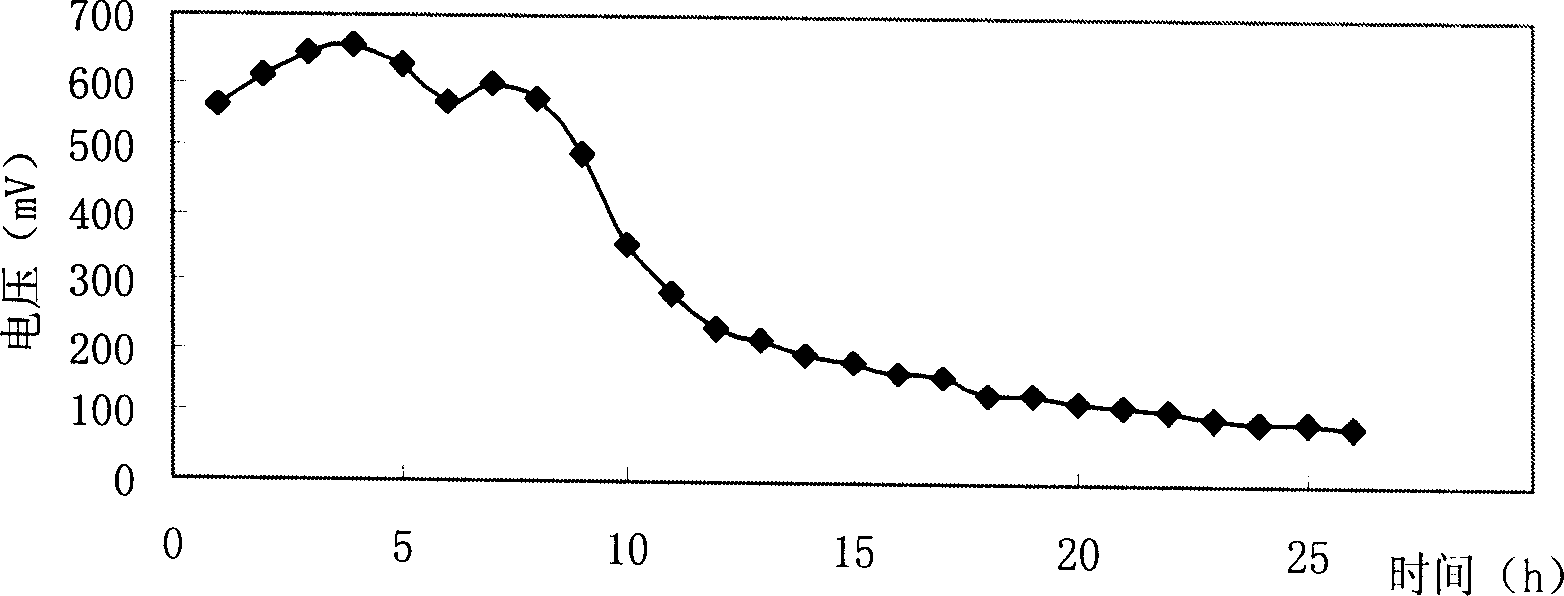Single pond type microbiological cell by using organic wastewater as fuel
A technology for microbial batteries and organic wastewater, applied in biochemical fuel cells, aerobic and anaerobic process treatment, etc., can solve problems such as increasing battery operating costs, and achieve the effect of economical removal and increase of oxygen content
- Summary
- Abstract
- Description
- Claims
- Application Information
AI Technical Summary
Problems solved by technology
Method used
Image
Examples
Embodiment Construction
[0015] Various embodiments of the present invention and their working process will be further described below in conjunction with the accompanying drawings.
[0016] like figure 1 As shown, the single-cell microbial battery described in the first embodiment of the present invention includes an anode pool 1 with organic waste water and anaerobic microorganisms inside, an anode 2 positioned inside the anode pool, and an anode pool fixed to the anode pool. 1. The cathode 3 at the open end; the anode pool is isolated from the air, and the interior is an anaerobic environment; the outside of the cathode is directly in contact with the air, and the oxygen in the air diffuses freely to reach the inside of the cathode.
[0017] One end of the anode cell 1 is closed and the other end is open. The anode 2 inside the anode cell 1 can be arranged on the side close to the closed end; the cathode 3 fixed on the open end of the anode cell 1 closes the open end of the anode cell 1 . The ano...
PUM
 Login to View More
Login to View More Abstract
Description
Claims
Application Information
 Login to View More
Login to View More - R&D
- Intellectual Property
- Life Sciences
- Materials
- Tech Scout
- Unparalleled Data Quality
- Higher Quality Content
- 60% Fewer Hallucinations
Browse by: Latest US Patents, China's latest patents, Technical Efficacy Thesaurus, Application Domain, Technology Topic, Popular Technical Reports.
© 2025 PatSnap. All rights reserved.Legal|Privacy policy|Modern Slavery Act Transparency Statement|Sitemap|About US| Contact US: help@patsnap.com



